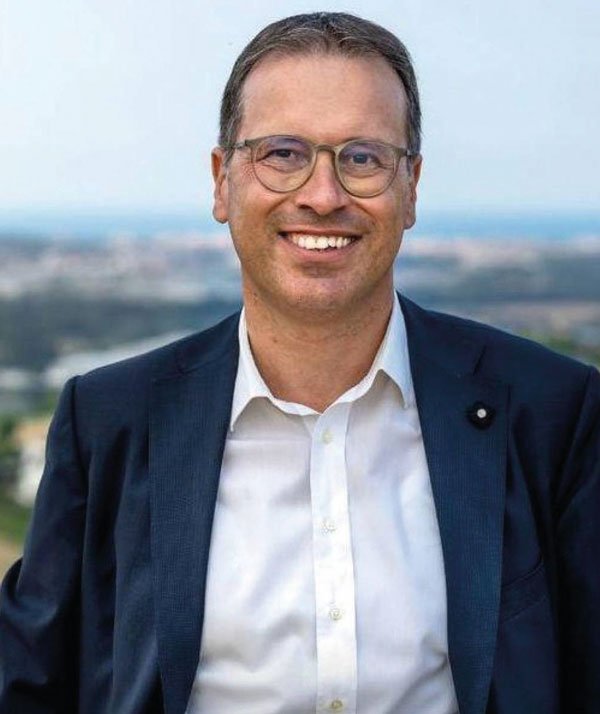Collaboration and new strategies, the keys to the upturn
Since 2021, Endrio Ubaldi has been dealing on a daily basis with matters concerning not only his town, territory-wise, but also the aspects related to the social as well as entrepreneurial fabric of the district based in the Fermo area – a cluster internationally acknowledged as a flagship, a byword for Italian manufacturing excellence and a true benchmark. Despite the complexities of the current historical context and the organizational structure’s efficiency-related issues, the mayor is fully committed to his responsibilities when it comes to administration projects, to culture, institutions, culture, environmental safeguard and territorial enhancement programmes, and to future-oriented initiatives.
From your point of view as mayor dealing daily with the local territory, what are the main the challenges for your town? And what are the entrepreneurs’ most pressing demands? “I had the chance to collect further information at the latest edition of Micam held in Milan. Workload has definitely dropped, and the number of orders has decreased as well – the Russian issue is worrisome. However, the greatest source of concern today lies in the lack of qualified human resources, especially for some professional figures operating in factories, such as female seamstresses. After the retirement of the previous generation of workers, local entrepreneurs are in deep trouble because they are forced to turn to external partners to carry out a process that, in the past, was usually performed in-house – the latter a strategic choice to better manage sample-making operations and the whole manufacturing cycle. The same goes for other professional figures, like Blake stitching experts or those taking care of the pulling-over and lasting phase, wellpaid jobs but performed by elderly, or even retired, workers. There is no generational turnover. The situation further worsens even for those companies that still hold steady and supply quality products, due to the fierce competition brought by firms that outsource their processes abroad, resulting in lower labour costs. Rather than make demands, entrepreneurs tend to point out this critical issue.”
Investment-wise, what has been done to address the situation? “There were a few attempts in the past, including the so-called Pilot Factory promoted by Ipsia, or the Vocational Education Centre Artiginelli, an initiative supported even by a renowned entrepreneur such as Nero Giardini. However, our youth are not interested and turn their attention to other sectors. Probably families made a mistake and chose words like “factories” or “manual conveyor”, rather than “footwear professionals”. Hence, figures like seamstresses, hemmers and others have become less and less qualified over the years, losing part of their dignity. Another issue, albeit less pressing, concerns traffic routes: our area can rely on an airport located pretty close, but the facility has had quite a few problems; furthermore, the industrial zone features rough road connections. Nevertheless, entrepreneurs do not complain, but rather highlight the objective reality: the increase in both raw materials and energy costs is a true concern, but there is also a cry for help due the lack of generational turnover. My hope, as well as my task as representative of the public administration, is to raise young people’s awareness and to draw the attention of the forty to fifty age bracket, giving them the chance to learn something new and to discover footwear craft and, especially for women, hemming techniques.”
Do you believe there is a chance to fully solve this problem? “I am an optimist. We are currently witnessing a change of course, thanks also to the presence of younger entrepreneurs at the helm of several local enterprises. Youth draws youth. Said firms, maybe at their third or even fourth generation, have become much more appealing, now featuring new organization models as well.”
Besides raising awareness, what else can be done? “In the past, there was a lot of competition and skepticism among local companies and entrepreneurs. A change in mindset and the generational turnover are fostering greater synergies. Unity is strength, this is a famous concept. If people join forces, they can work together and find the best way to enhance a sector that, despite the crisis or the decrease in orders, is still one of our key assets.”
What are your hopes for the future of the territory and of your town? “For my territory, I would wish for production diversification, for the enhancement of our tourism, culture and nature. We have amazing landscapes, we are 12 km away from the sea and our hills are beautiful; the countryside and rural roads have become a favourite destination for biking lovers in Italy. Montegranaro is in an ideal position, located just over half an hour away from the mountains and ten minutes away from the highway. At the same time, I hope that we will be able to safeguard this ancient manufacturing tradition by promoting the growth of companies and by focusing more and more on the production of top-quality articles. The local administration is investing significant resources on both fronts. We are pretty confident about the future.”

Endrio Ubaldi, Mayor of Montegranaro
